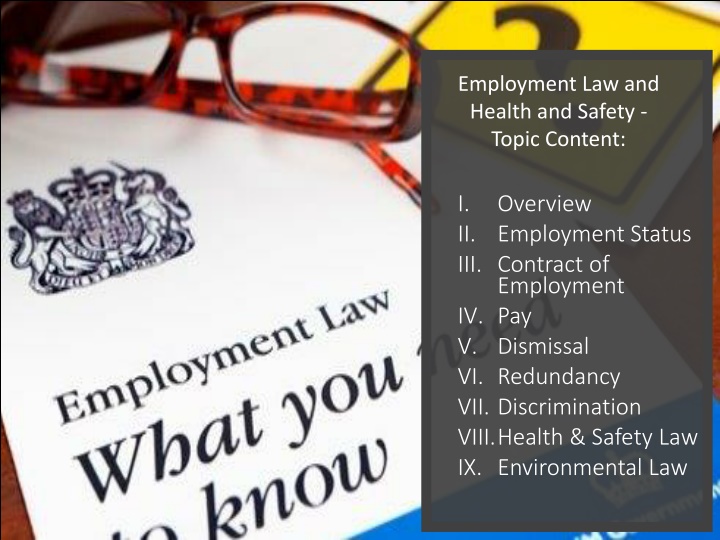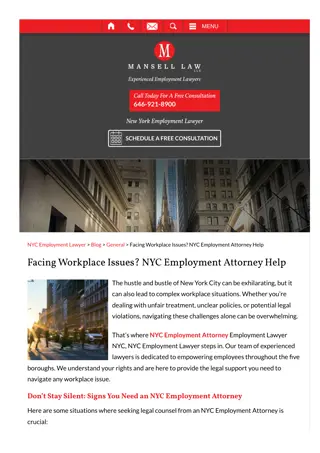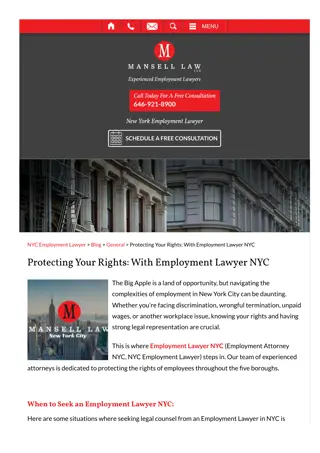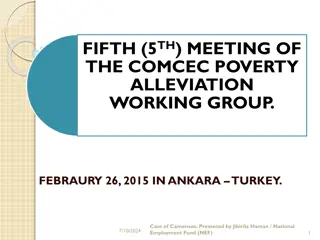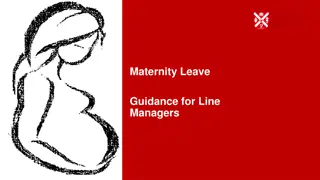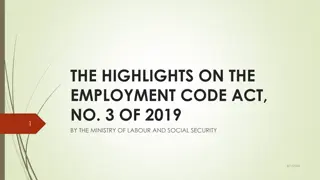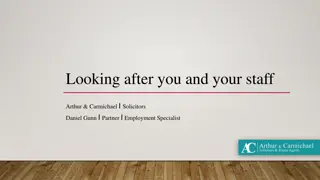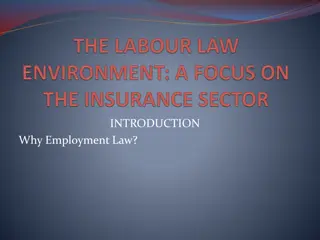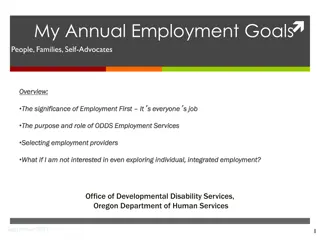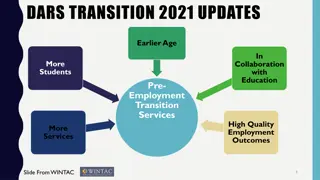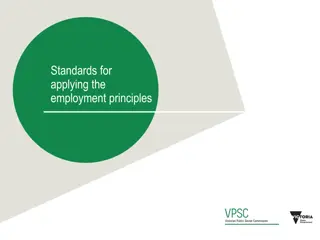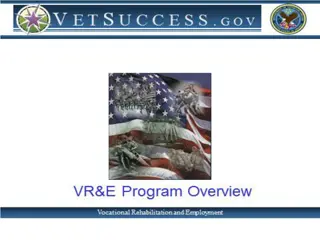Practical Considerations of Employment Law for Business Managers
Business managers must be aware of potential employment issues, such as stress in the workplace and whistleblowing protections. Understanding laws like the Public Interest Disclosure Act and the Working Time Regulations is crucial to handling employment disputes effectively and ensuring fair treatment of employees. By adhering to legal requirements and promoting open communication, managers can create a positive work environment that prioritizes employee well-being and legal compliance.
Uploaded on Mar 10, 2025 | 0 Views
Download Presentation

Please find below an Image/Link to download the presentation.
The content on the website is provided AS IS for your information and personal use only. It may not be sold, licensed, or shared on other websites without obtaining consent from the author.If you encounter any issues during the download, it is possible that the publisher has removed the file from their server.
You are allowed to download the files provided on this website for personal or commercial use, subject to the condition that they are used lawfully. All files are the property of their respective owners.
The content on the website is provided AS IS for your information and personal use only. It may not be sold, licensed, or shared on other websites without obtaining consent from the author.
E N D
Presentation Transcript
Employment Law and Health and Safety - Topic Content: I. II. Employment Status III. Contract of Employment IV. Pay V. Dismissal VI. Redundancy VII. Discrimination VIII.Health & Safety Law IX. Environmental Law Overview
Practical considerations of Employment Law and Regulations relevant to Business Managers Business managers need to be aware of potential employment issues as they may employ or have a direct influence over individuals covered by any relevant legislation. Business managers must be aware that in a business environment there is a risk that people are put in stressful situations that are unreasonable and this must be avoided. Business managers must be aware that a long absence from work may be a sign of something more sinister. If an employee feels stressed at work they may be more inclined to stay away.
The Public Interest Disclosure Act 1998 Covers the case of whistle-blowing. If staff feel that they are being directed to undertake activities they feel are in some way illegal or otherwise irregular, they have protection should they inform others of the facts without fear of recrimination. The business manager must ensure that open and honest communication is encouraged and team concerns are taken seriously and dealt with.
The Working Time Regulations 1998 Prescribe rules regarding the amount of time an employee can work, have breaks and holidays; i.e. employees have rights under this law Business managers must be aware that again there is a risk that in a pressurised environment there may be an urge to work longer than is strictly allowed. Business managers must ensure that objectives and targets are fairly set and do not overburden the team.
I. Employment Law - Overview Concerns the relationship between employers and employees. Disputes are almost always resolved at an Employment Tribunal, or before reaching one, and appeals are heard at the Employment Appeal Tribunal (EAT). Complaints leading to legal action include: o Redundancy; o Unlawful Dismissal; o Wrongful Dismissal; o Breach of contract; o Harassment; and o Discrimination.
I. Employment Law - Overview Discrimination can be brought on the grounds of race, religious or philosophical belief, gender, sexual orientation, disability and age. There has been an increase in claims related to discrimination and the breach and enforcement of post-termination restrictions which has been seen as a result of the credit crunch. Employers have a greater appetite for litigation to protect business interests, but employees facing redundancy are also eager to fight for their rights.
II. Employment Status Three types of worker: o Employee o Independent contractor o Worker Why is this distinction important...?
II. Employment Status UK employment law does NOT give equal protection to everyone who is working for an employer. Employer has greater responsibilities to an Employee Independentcontractors are not entitled to the full range of employments rights which are only available to employees The Employment Rights Act 1996 is the current source of much of the employment law that applies to Employees.
II. Employment Status The Employment Rights Act 1996 Employment Rights Act 1996: It defines employee in s230(1) as an individual who has entered into or works under a contract of employment It defines an employment contract as: a contract of service or apprenticeship; s 230(2) ERA 1996 So an employee: works under a contract of service (very broad definition) Independent contractor: works under a contract for services
II. Employment Status: Employee The right not to be unfairly dismissed, redundancy and various maternity rights The employer rather than the employee may be liable for the torts which are committed at work during working time (Vicarious liability of employer). Employers owe employees a higher duty under health and safety law Employees enjoy more common law employment rights e.g. duty to maintain relationship of mutual trust and confidence, or general duty of care that all employers owe to all employees The rate of income tax and national insurance payments are different for employees and self-employed contractors. Employees pay higher national insurance contributions than self-employed people but also get better benefits e.g statutory sick pay. An employee is subject to greater control and implied terms in their contract than independent contractors
II. Employment Status: Independent Contractor Have tax advantages; pay lower national insurance contributions Have the ability to work for many different employers Can deduct expenses incurred in his employment which employees cannot. BUT, self-employed persons are excluded from many protections through statutory rights which make them vulnerable if they dismissed, made redundant or become pregnant.
II. Employment Status Over past 150 years, courts have developed various common law tests to determine whether or not someone is an employee, and if so would be entitled to the full range of employment protection and rights. 4 major tests: Control test Integration test Economic reality test Mutuality of obligation test
II. Proposed reforms in the law on employment status There is a concern some potential employers will take advantage of the confused situation and use it to their unfair advantage. E.g. this has happened in construction industry over the years. Builders have been employed on subcontractor or bogus self-employed contracts. People are denied significant employment rights such as unfair dismissal because they think they are not qualified to bring the claim. There are losses to the country s economy because people are wrongly categorized a self-employed so don t pay national insurance contributions and are able to take advantage of tax rules not available to employed persons.
II. Proposed reforms in the law on employment status Because people wrongly think they are self-employed, many accidents involving them frequently go unreported (because legal responsibility rests with them and not the constructing firm employing them). Because they think they are self-employed, they have no right to industrial compensation for any injuries that they sustain at work. Many people working who are in an employment relationship where they are dependent on their employer, and are not really independent contractors, but are denied the same standard statutory and contractual employment rights
II. Employment Status: The third category - The 'Worker' Employment laws have been passed in recent years (often with a European origin) that include some independent contractors as well as employees within their remit This has become known as the worker category. Employees: entitled to full range of employment rights; Independent contractors: have only very minimal, recent employment rights; and Worker (essentially a category in between): can benefit from some employment rights but excluded from the most fundamental
III. Contract of Employment Why is it still important? To fill in gaps left unregulated by statute Because employment protection legislation has been drafted in reliance on contractual definitions The role played by breach of contract in the law of industrial action Employees still look to contractual remedies as a more effective form of job protection
III. Contract of Employment - Terms Sources of contractual terms Express terms (letter of appointment, items in a staff book) Imposed terms (minimum notice, tax, insurance, pension contribution) Implied terms (duty of cooperation) Terms incorporated from collective agreements
III. Contract of Employment Implied Terms of the Employee Employees must act with complete honesty towards employers. Employees must not compete with the employer s business. Employees must not disclose confidential information about employer's business such as profits, customers or products etc.
III. Contract of Employment Implied Terms of the Employer Show mutual respect to the Employee. To provide work, or pay the employee if there is no work. To pay wages. Not to reveal confidential information. To insure the employee. To take reasonable care and skill in preparing a reference (although an employer has no duty to provide a reference)
IV. Pay.... Wages/Salary commonly form part of employment contract. Common law duty to pay employees Statutory minimum wage National Minimum Wage Act 1996 Equal Pay Equal Pay Act 1970
V. Dismissal Wrongful dismissal - employee may sue under the common law for breach of contract. Unfair dismissal statutory intervention provided by Employment Relations Act 1996 Employment Relations Act 1996 Redundancy statutory claim
V. Dismissal - Grounds Section 98 Employment Relations Act 1996: Employees have statutory right not to be unfairly dismissed Not all employees are eligible to claim Eligible employees are those who have been in continuous employment for more than one year; are under retirement age and have not waived their rights to claim (short term contracts) If eligible, employee must show that they have been dismissed. Next the burden is on employer to prove: 1. A ground for dismissal 2. That the dismissal was fair.
V. Dismissal - Grounds Section 98 Employment Relations Act 1996: 5 grounds which will justify a dismissal 1. Lack of qualifications/capability 2. Employee s conduct 3. Redundancy 4. Continuing employment would be illegal 5. Any other substantial reason
V. Dismissal - Grounds Section 98 Employment Relations Act 1996: 5 grounds which will justify a dismissal 1. Lack of qualifications/capability Lister v Thom & Sons Ltd (1975) Did not obtain agreed qualifications but was able to serve employer in another capacity Negligence may justify dismissal. Long term sickness.
V. Dismissal - Grounds Section 98 Employment Relations Act 1996: 2. Employee s conduct Misconduct may include: Theft Dangerous Behaviour Drinking on the job Lying Swearing Misconduct must be in relation to the job they are employed to do.... Thomson v Alloa Motor Co (1983)
V. Dismissal - Grounds Section 98 Employment Relations Act 1996: 3. Redundancy An employer may need to reduce the size/number of employees which is a ground for dismissal. An employee who has been made redundant may be entitled to compensation.
V. Dismissal - Grounds Section 98 Employment Relations Act 1996: 4. Continuing employment would be illegal E.g.; a delivery driver who has their driving licence revoked. Dismissal in these circumstances may not be fair however; employers must consider e.g.; length of suspension, alternative roles etc.
V. Dismissal - Grounds Section 98 Employment Relations Act 1996: 5. Any other substantial reason For other instances which do not fit into the previous categories: Farr v Hoveringham Gravels Ltd (1972) A term in the contract required the employee to live within a reasonable travelling distance of workplace. Employer was held to have fairly dismissed him after he moved to a home over 40 miles away.
V. Fairness of Dismissal Tribunal must decide whether or not the dismissal was fair in light of all of the circumstances, e.g.: Proper procedures followed? Acted as a reasonable employer would have? Dismissal will be automatically unfair in certain circumstances e.g. in connection with maternity/paternity
Remedies for Unfair Dismissal 1.Reinstatement 2.Re-engagement 3.Compensation
Redundancy Eligibility 1 year continuous work Defence to redundancy claim suitable alternative employment. Voluntary or Compulsory Redundancy?
VI. Discrimination Statute seeks to ensure no discrimination in the workplace based on: Sex Sexual orientation Race Religion Disability Project managers, like their line management colleagues, need to be aware of the implications of contravening these regulations and engender an environment of inclusion and fairness in all the project activities.
VII. Discrimination - Equality Act 2010 Prohibits Racial Discrimination/Sex Discrimination in the workplace Direct Discrimination Indirect Discrimination Discrimination by victimisation Exclusions? In some circumstances discrimination is permitted genuine occupational qualification
VIII. Health and Safety Common law implies a term into employment contracts that employers must take reasonable care to provide safe working conditions for their employees. Legislation Health & Safety at Work Act Health & Safety at Work Act 1974 1974 provides general duties of employers. Criminal offence to breach the HSAWA 1974!
VIII. Health & Safety at Work Act 1974 The main enabling act of Parliament for H&S is this Act. Its objectives were to: Secure the health, safety and welfare of persons at work and protecting persons, other than persons at work, against risks to health or safety arising out of or in connection with the activities of persons at work Act introduced a new system based on less-prescriptive and more goal- based regulations, supported by guidance and codes of practice. For the first time, employers and employees were to be consulted and engaged in the process of designing a modern health and safety system
VIII. Health & Safety at Work Act 1974 The Act also established the Health and Safety Commission (HSC) Commission (HSC) for the purpose of proposing new regulations, providing information and advice and conducting research. Health and Safety The HSC s operating arm, the Health and Safety Executive (HSE) Executive (HSE) was formed shortly after in order to enforce healthy and safety law, a duty shared with local authorities. Health and Safety
VIII. Health & Safety at Work Act 1974 The importance of the Act is to enshrine in law the acceptable standards and mechanisms to achieve the objectives. The benefits of the Act are to provide: A healthy and safe environment for employees Protection to the general public who may be affected by work Clear reporting and management structure to ensure that the processes are in place Guidance on the interpretation of the law Codes of conduct to be followed in specific industries
VIII. Health & Safety what does a PM need to be aware of? A Business Manager (as part of the organisation s management structure) must consider and ensure: A health, safety and environmental management plan is in place Risk assessments are carried out The project team is properly trained There is open and honest disclosure Regular reviews are undertaken Everyone is aware of stress as a potential HSE issue Proper safety equipment is provided Environmental issues are addressed [Note: It is advisable to obtain proper health and safety advice when the need arises]
IX. Environmental Law and Regulations There are literally hundreds of pieces of applicable legislation Business management is constrained by more environmental considerations now than ever before including the following: Before starting a business or a project you may need to consider undertaking an environment impact assessment. This will take into account the wider range of environmental aspects that a business or a project may affect or be affected by e.g. the discharge of water, traffic congestion, noise, smoke, etc. It would need to be done at an early stage, usually as part of planning stages and may be needed to support a planning application In construction projects, the use of contaminated land to build on will also result in the need to carry out proper surveys, along with the correct disposal of any waste from the site and recycling of any that can be re-used on the site Energy consumption will be closely monitored, for example on an IT project The waste hierarchy ranks waste management options according to what is best for the environment. It gives top priority to preventing waste in the first place. When waste is created, it gives priority to preparing it for reuse, then recycling, then recovery, and last of of all, disposal.
